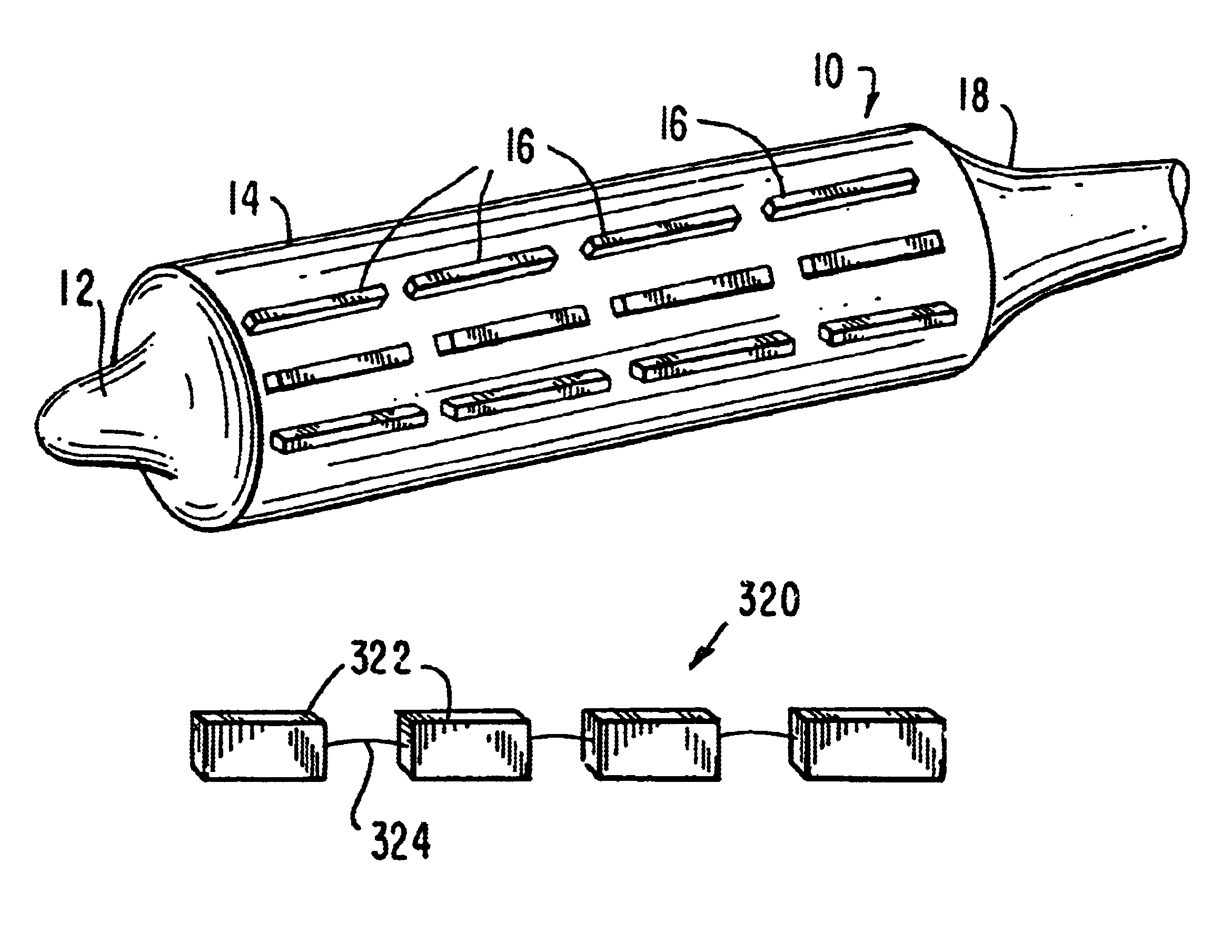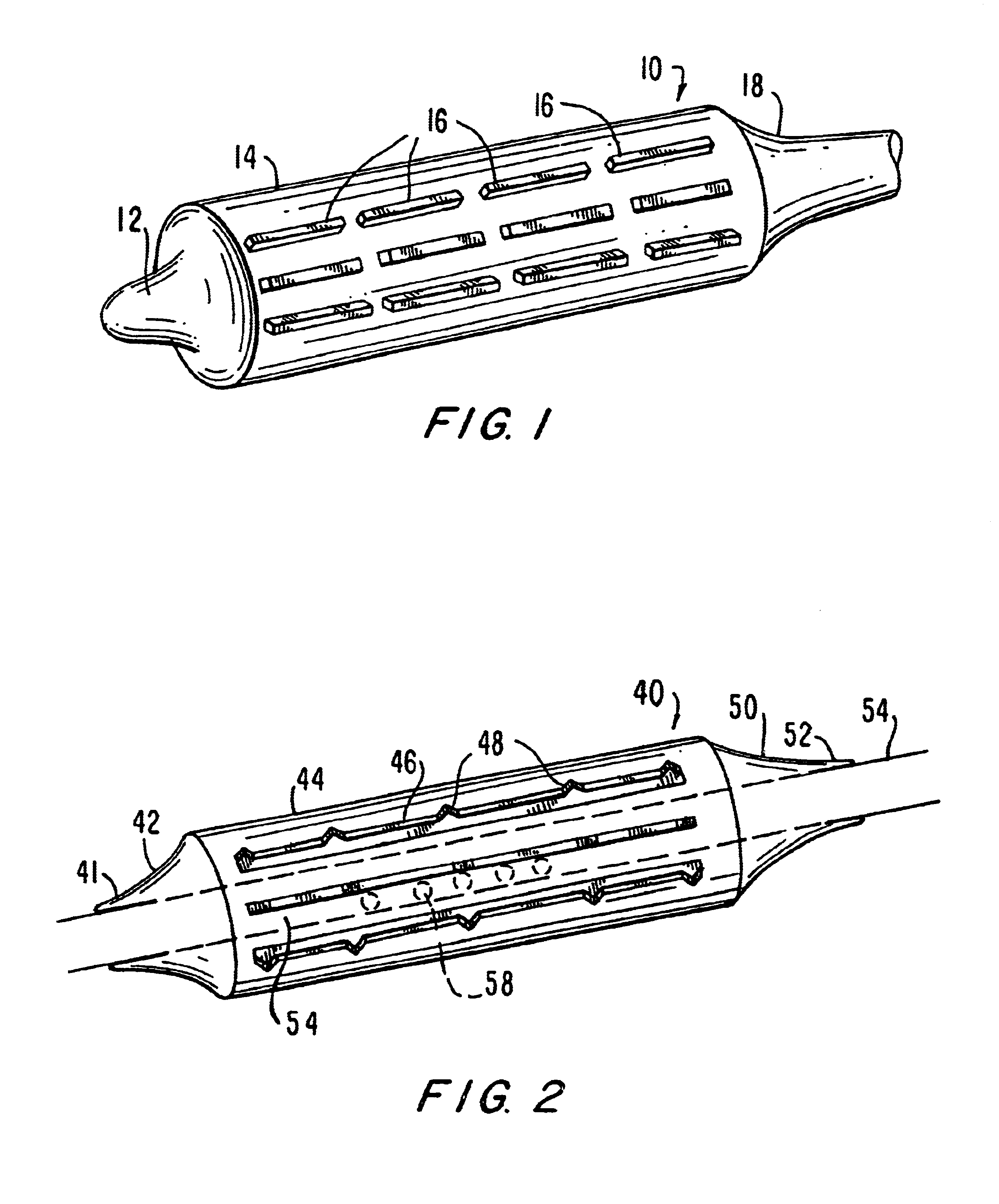Stiffened balloon catheter for dilatation and stenting
a balloon catheter and dilatation technology, which is applied in the field of balloon catheters for angioplasty and the delivery of stents and stentgrafts, can solve the problems of inadequate dilatation of stenotic, the length of the stent, and the failure of the stent to produce a uniform diameter, so as to improve the stiffness of the stiffening member, and improve the stiffness
- Summary
- Abstract
- Description
- Claims
- Application Information
AI Technical Summary
Benefits of technology
Problems solved by technology
Method used
Image
Examples
Embodiment Construction
[0044]FIG. 1 is a drawing of an embodiment of the present invention, indicated generally as device 10, particularly suited for navigating curved or otherwise angled passages. In angio-valvuloplasty procedures, device 10 may be advantageously utilized to access vessels via passages that have curved sections and, in certain embodiments, even passages that include acute angles. Device 10 comprises a balloon having a distal end 12, a balloon 14, discontinuous stiffening members 16 and proximal end 18. Device 10 is generally comprised of standard inert balloon catheter materials suitable for introduction into the human body.
[0045]Distal end 12, balloon 14 and proximal end 18 are preferably comprised of a thin, flexible, and generally inelastic material that expands outwardly to assume a predetermined shape at a particular interior pressure, e.g., an envelope with a fixed configuration. Alternatively, end 12, balloon 14 and end 18 are formed from an elastic material. While end 12, balloon...
PUM
 Login to View More
Login to View More Abstract
Description
Claims
Application Information
 Login to View More
Login to View More - R&D
- Intellectual Property
- Life Sciences
- Materials
- Tech Scout
- Unparalleled Data Quality
- Higher Quality Content
- 60% Fewer Hallucinations
Browse by: Latest US Patents, China's latest patents, Technical Efficacy Thesaurus, Application Domain, Technology Topic, Popular Technical Reports.
© 2025 PatSnap. All rights reserved.Legal|Privacy policy|Modern Slavery Act Transparency Statement|Sitemap|About US| Contact US: help@patsnap.com



